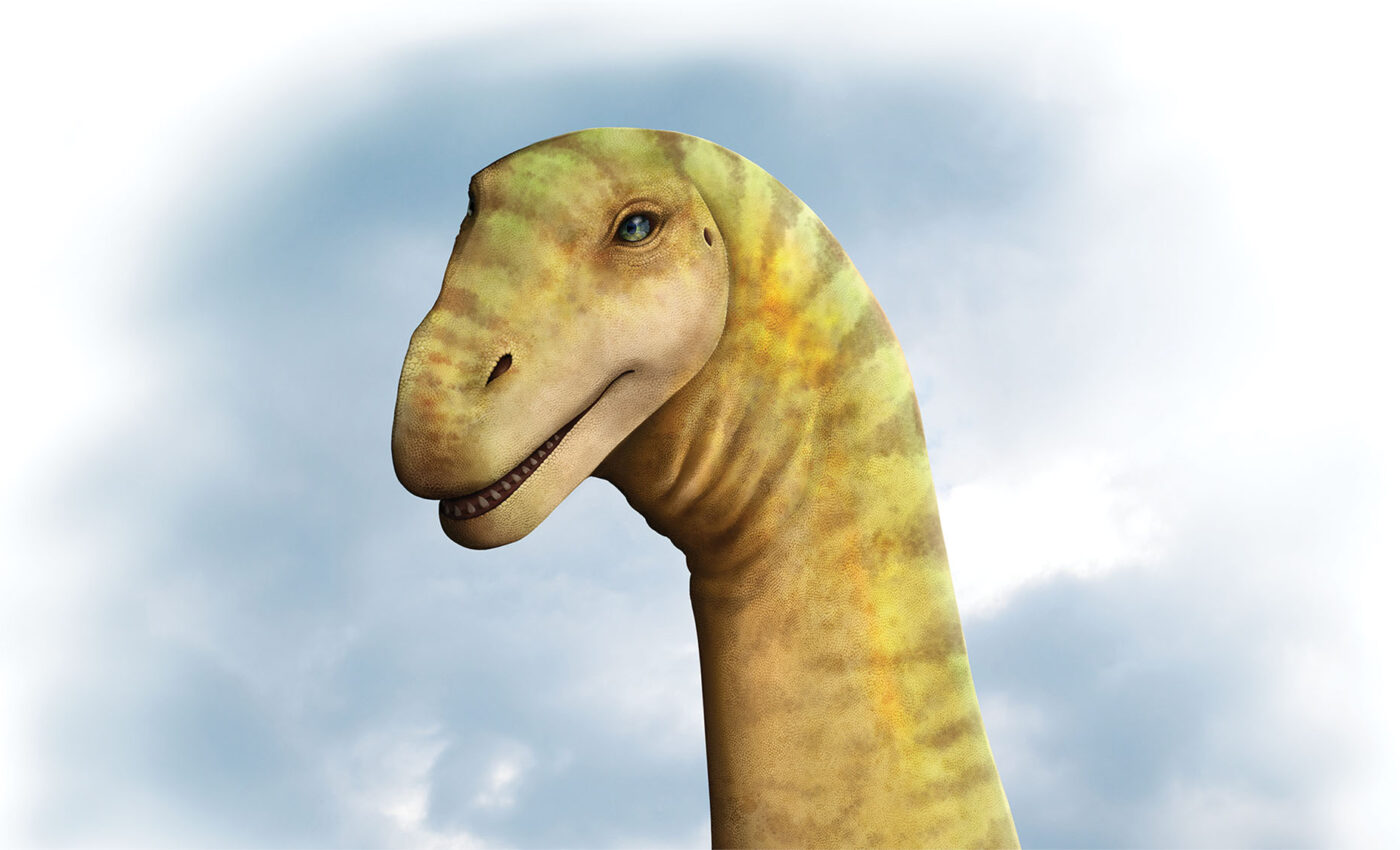
New species of sauropod dinosaur discovered
A recent discovery by a Curtin University-led research team has provided new insights into the anatomy, relationships, and feeding habits of sauropod dinosaurs, after analyzing Australia’s first nearly complete sauropod skull.
Found in Queensland, the skull belonged to a dinosaur nicknamed “Ann,” identified as a Diamantinasaurus matildae species. The research, published in the journal Royal Society Open Science, was completed in collaboration with the Australian Age of Dinosaurs Museum of Natural History.
Diamantinasaurus is part of the dinosaur group Sauropoda, characterized by their small heads, long necks and tails, barrel-like bodies, and four columnar legs. Dr. Stephen Poropat, lead researcher and paleontologist from Curtin’s School of Earth and Planetary Sciences, said that Ann is the first sauropod dinosaur discovered in Australia with most of its skull intact and the first Diamantinasaurus specimen to preserve a back foot.
Dr. Poropat expressed his enthusiasm for the discovery: “I was lucky enough to be involved in this Australian-first discovery. Being able to lead the research on these fossils was a huge privilege. This skull gives us a rare glimpse into the anatomy of this enormous sauropod that lived in northeast Australia almost 100 million years ago.”
The analysis of Ann revealed similarities between its skull and that of a titanosaur called Sarmientosaurus musacchioi, which lived in South America around the same time as Diamantinasaurus inhabited Queensland. These similarities included details of the braincase, the bones forming the back end of the skull near the jaw joint, and the shape of the teeth, which were conical and curved.
Why these findings are significant
“Our research suggests that Diamantinasaurus was one of the most ‘primitive’ titanosaurs,” said Dr. Poropat. “Gaining a better understanding of this species might explain why titanosaurs were so successful, across so much of the world, right until the end of the Age of Dinosaurs.”
Furthermore, Dr. Poropat said the study supports previous theories proposing that sauropods used Antarctica as a pathway between South America and Australia between 100 and 95 million years ago. “We suggest that sauropods were traveling between Australia and South America, via Antarctica, during the mid-Cretaceous. Warmer conditions that far south might have been favorable for them.”
He elaborated on the climatic conditions of the time: “The window between 100 and 95 million years ago was one of the warmest in Earth’s geologically recent history, meaning that Antarctica, which was more or less where it is now, had no ice. Similarly, Australia, which was much further south than today, was warmer with less seasonality. In that climate, Antarctica was forested, and might have been an attractive habitat or pathway for wandering sauropods.”
The sauropod skull was discovered on Elderslie Station, near Winton in 2018 by the Australian Age of Dinosaurs Museum during its annual dinosaur dig. ‘Ann’ is the third fossil specimen of Diamantinasaurus matildae found on Elderslie by the Museum and the fourth specimen overall.
More about sauropods
Sauropods were a group of long-necked, herbivorous dinosaurs that lived during the Mesozoic Era, approximately 230 to 66 million years ago. They were some of the largest animals ever to walk the Earth, and they thrived across the globe. Some of the most well-known sauropod species include Apatosaurus, Brachiosaurus, and Diplodocus. Here are some key characteristics and facts about sauropods:
Size
Sauropods were among the largest land animals ever to have existed. Some species, like Argentinosaurus, could reach lengths of over 100 feet (30 meters) and weigh over 100 tons. However, not all sauropods were giants; some, such as Magyarosaurus, were relatively small, reaching only about 19 feet (6 meters) in length.
Anatomy
Sauropods had long necks and tails, small heads, and massive, barrel-shaped bodies. Their legs were column-like, with large, elephant-like feet. The long necks allowed them to reach vegetation that was otherwise inaccessible to other herbivores, while their long tails provided balance and stability.
Diet
Sauropods were herbivores and fed primarily on vegetation, such as leaves, ferns, and conifers. Some researchers believe that sauropods swallowed stones (gastroliths) to help grind plant material in their digestive systems, as their teeth were not well-suited for chewing.
Reproduction
Sauropods laid eggs, and many sauropod nesting sites have been discovered, showing that they built large nesting colonies. The eggs were relatively small compared to the size of the adult animals, with diameters of around 4 to 12 inches (10 to 30 centimeters).
Social behavior
It is believed that sauropods may have traveled in herds, offering protection from predators and facilitating access to food resources. Some trackways (fossilized footprints) provide evidence of sauropods moving in groups.
Diversity
Sauropods were a diverse group of dinosaurs, with a wide variety of body shapes, sizes, and adaptations. Some, like Brachiosaurus, had longer forelimbs than hindlimbs, giving them a more upright posture. Others, like Diplodocus, had a more horizontal posture with long, whip-like tails.
Evolution
Sauropods first appeared in the Late Triassic Period, and they continued to evolve and diversify throughout the Jurassic and Cretaceous periods. Their evolutionary history includes several subgroups, such as the diplodocoids (e.g., Diplodocus, Apatosaurus) and the macronarians (e.g., Brachiosaurus, Camarasaurus).
Sauropods were a remarkable and successful group of dinosaurs that dominated their ecosystems for millions of years. Their unique anatomy, size, and adaptations enabled them to thrive in a variety of environments and continue to fascinate scientists and the public alike.
Image Credit: Australian Age of Dinosaurs Museum of Natural History
—-
Check us out on EarthSnap, a free app brought to you by Eric Ralls and Earth.com.













